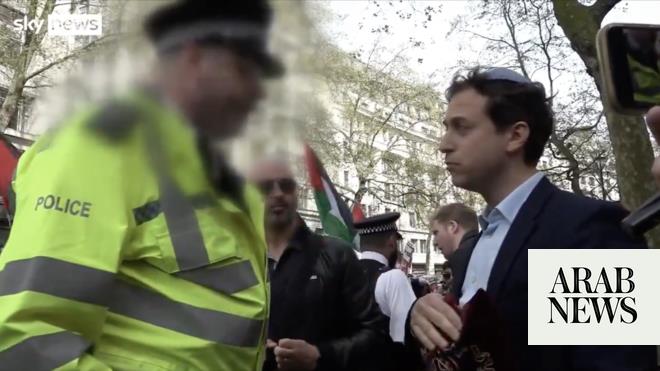
Seven people were injured in the Islamic State-inspired terror attack in New Zealand, Jacinda Ardern has said, updating initial reports that only six people had been hurt.
Speaking at a media conference in Wellington on Saturday, New Zealand’s prime minister said that of the seven injured, five were in hospital, and three of them were in a critical condition.
Suppression orders on the attacker’s name and immigration status were lifted on Saturday night. He can now be named as Ahamed Aathil Mohamed Samsudeen, who was trying to retain his status as a refugee in New Zealand when he carried out the attack. The Sri Lankan was shot dead by police after the attack at a supermarket in Auckland on Friday.
Ardern said his name was “not something I had any intention of sharing ... No terrorist alive or deceased deserves a name to be shared for the infamy they were seeking”.
It previously emerged that he had been in New Zealand for 10 years and had been known to the authorities for the last five, during which time police made repeated efforts to speak to the “highly paranoid” man, curb his behaviour, and put him in jail.
Ardern said the man had been identified as a possible terror threat and was under surveillance by police at the time of the stabbing rampage on Friday.
Samsudeen arrived in New Zealand in October 2011, aged 22, Ardern said, and was travelling on a student visa. “It was not known that he held extreme views about violent extremism at that time,” Ardern said.
Police commissioner Andrew Coster provided more detail on how the attack itself played out in a Countdown supermarket in New Lynn, Auckland.
“There was nothing unusual about the subject’s routine as he travelled by train to the supermarket,” Coster said.
The man took a supermarket trolley, and began shopping as normal, Coster said. He was shopping for about 10 minutes before the attack started.
CCTV showed Samsudeen removing a kitchen knife from the shelves in the store. Coster said a knife fitting that description was found close to him after he was shot. “I can’t rule out until we’ve completed our scene examination that any other weapons were involved … but nothing suggests to me anything other than the knife was obtained in the store.”
CCTV footage has shown that the first stabbing occurred about 60 to 90 seconds before the surveillance team heard shouts and saw people running, Coster said.
Another minute after the surveillance team heard the commotion, they located and shot Samsudeen.
Police had been aware of the man as a high-risk person with extremist views, and had made a number of attempts over the past five years to speak to him, change his behaviour and to lay charges.
Samsudeen had been under constant surveillance for the last 53 days – a costly, and unusual operation in New Zealand. Ardern said about 30 people had been involved in monitoring him.
In 2016 he came to police attention after talking sympathetically on Facebook about terrorist attacks, violent war-related videos and comments advocating violence extremism, and he was spoken to by police.
In May 2017, Samsudeen was arrested at Auckland International airport. Police believed he was heading to Syria, and a search of his apartment found Islamic State propaganda, and a hunting knife.
‘Highly paranoid’
He was released on bail, but in August 2018 – while on bail - bought a knife and police arrested him again, and found further extremist material.
In July 2020, the crown made an unsuccessful attempt to lay an additional charge under the Terrorism Suppression Act, but this was rejected by the high court.
He had already been detained for three years. He was found guilty of the charges for IS propaganda, and sentenced in July 2021 to a year’s supervision, with a series of conditions that restricted him from internet devices.
The government faced questions over why the surveillance and armed response team took two minutes to accost Samsudeen. Officials said he was “highly paranoid” and the surveillance team had to keep their distance to avoid detection.
“I want to explain the context to make it clear how this occurred … long term surveillance of a surveillance-conscious subject is very difficult,” Coster said. “Surveillance teams must work hard not to be recognised, otherwise the surveillance becomes ineffective.”
Coster said the man “was surveillance conscious, he was using counter-surveillance methods. He had challenged members of the public about whether they were surveilling him. Highly paranoid.”
Ardern said: “Every legal avenue that was available was utilized, and when it was no longer possible to legally have this person detained, that is when the police came in with that constant monitoring.”
The courts and government had tried a range of strategies to contain Samsudeen, including a judge-ordered psychiatric assessment, intended to determine whether the man could be sectioned – or forced into treatment in a mental health facility. He refused that assessment. Ardern said it was the government “exhausting every avenue” to keep him out of the community.
“What you can see – and overseas examples have demonstrated this also -when you have a highly motivated, lone actor like this individual, it’s an incredibly tough situation.”












